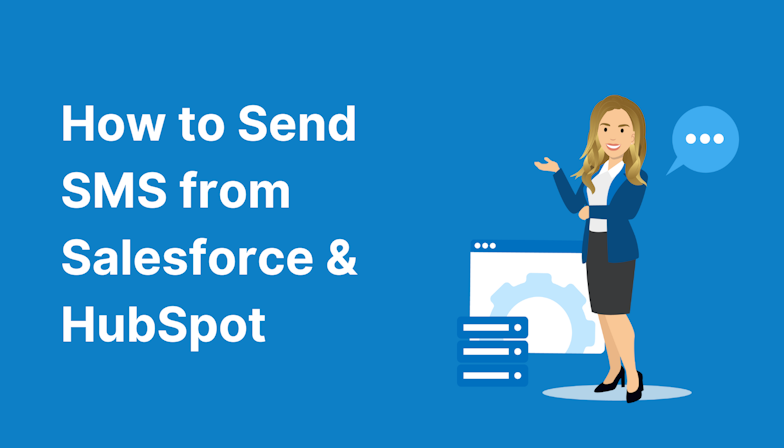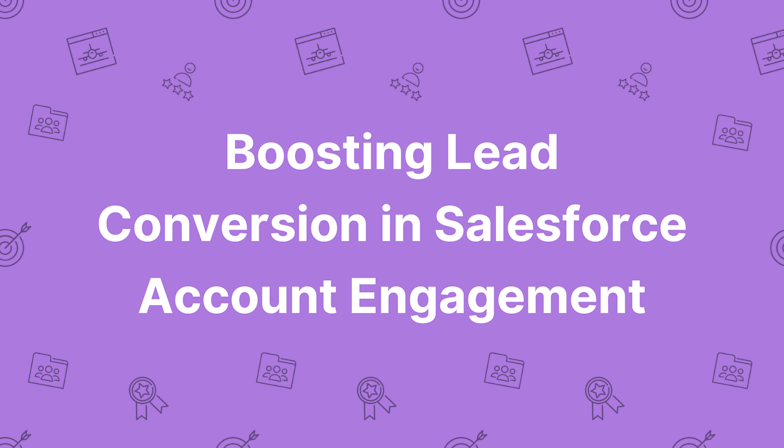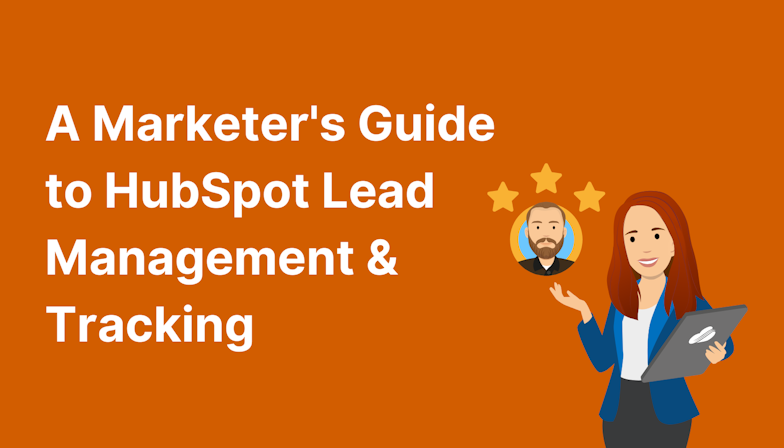This blog was written before Pardot was renamed to Marketing Cloud Account Engagement. You can read more about the name change and what it means here.
The goal for any marketer is to be able to build marketing campaigns, track performance and show leads generated as a direct result of marketing to the rest of the business. In doing so, it justifies marketing spend and helps the team obtain more budget for future marketing campaigns as ROI has clearly been demonstrated.
Pardot reporting empowers the marketing team by automatically updating these key reports, which is pretty useful because exporting stats and creating reports in Excel/Google Sheets is such a ball-ache!
Using the reporting in Pardot isn’t just a massive time saver, it is a living and breathing part of the system that updates in real time which means you can be confident that the stats you bring into your meetings are completely up to date.
How do Pardot campaigns work?
Cost
It all begins with a new campaign. An often overlooked part of this campaign creation is the Cost’ option. Here, you should input the campaign budget (you can always come back and reduce this once the campaign spending has stopped, to update the real figure). This is important because this lets Pardot figure out the cost per prospect, cost per opportunity and ROI % of the campaign.
Tip: A campaign in Pardot should be created when you want to track the performance of a new thematic touchpoint. For example, an event you attend would have it’s own campaign created as there will be emails, lists, landing pages, forms and other assets linked to this event/campaign.
Tracking code
Once the campaign is created, it will generate a campaign tracking code which you can place on your website or 3rd party landing page. You’ll want to add this tracking code to pages that you’re promoting through paid ads, events, direct mail and any other offline marketing. For example, you might want to track how many new prospects each salesperson has found by setting up landing pages with a unique tracking code on each and having a unique URL on their business cards. Campaign Tom Ryan Business Cards’ could be set up and so on.
For landing pages hosted within Pardot, you do not need to add the tracking code as Pardot will automatically add this when you assign the landing page to the campaign in the editor.
Creating/assigning assets to the campaign
I mentioned this above and if you’ve ever created an asset in Pardot, you’ll know that you need to assign all assets to a campaign. It’s a compulsory setting for a reason, it let’s Pardot know where to attribute ROI. If a brand new prospect views your landing page from an event 6 months ago and then converts today, you can attribute the value back to the event and make a data driven decision as to whether you should attend next year.
Understanding Visitors, Prospects, MQL’s, SQL’s and won deals
To learn more about the terminology in the Pardot reports, check out our quick reference Pardot terminology infographic (If anyone has a better/shorter/cooler name for this, please send me your suggestion).
Synchronisation with Salesforce Opportunities
The best part about all of this closed loop Pardot reporting is the integration with Salesforce opportunities. Once an opportunity is created and subsequently closed won, this updated the ROI figures and campaign stats. Remember you updated the cost of the campaign? This is where it ties in.
Important: To tell Pardot which prospect is assigned to the opportunity, you need to update the contact role in the opportunity. This then updates the reporting in Pardot, attributing the opportunity back to the prospect record.
What will the Pardot reports show me?
Lifecycle report
If you haven’t got the lifecycle report working yet, it’s something to add to the priority list. The information this report tells you is invaluable and helps you to easily inform senior management on how things are going from a marketing perspective. It will show you your marketing funnel and gives you a strong idea of your current pipeline. On the right-hand side, the velocity chart gives an indication as to the time it takes to go from prospect to a won deal which really helps you to plan your future campaigns!
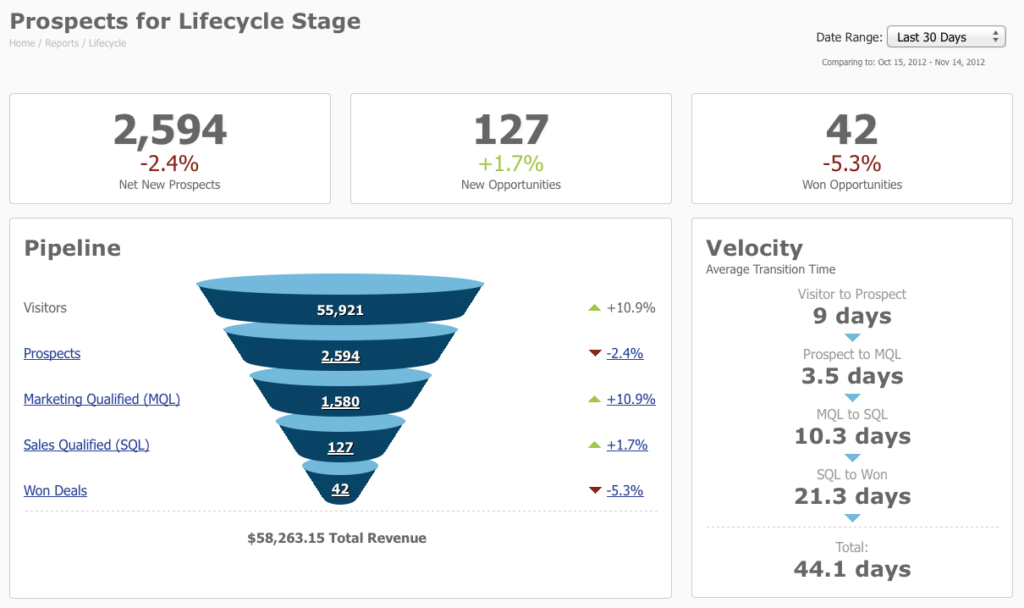
Campaign reporting
When you head to Reports > Campaigns, it will give you an overview of all of the campaigns you’ve created including the campaign performance graph. This gives you a visual aid so you can see at a glance what campaigns are most successful, where most of the budget is going and where to focus your attention. This graph is interactive to play around with the dropdowns and sliders to familiarise yourself with the tool and to get the exact report that you want.
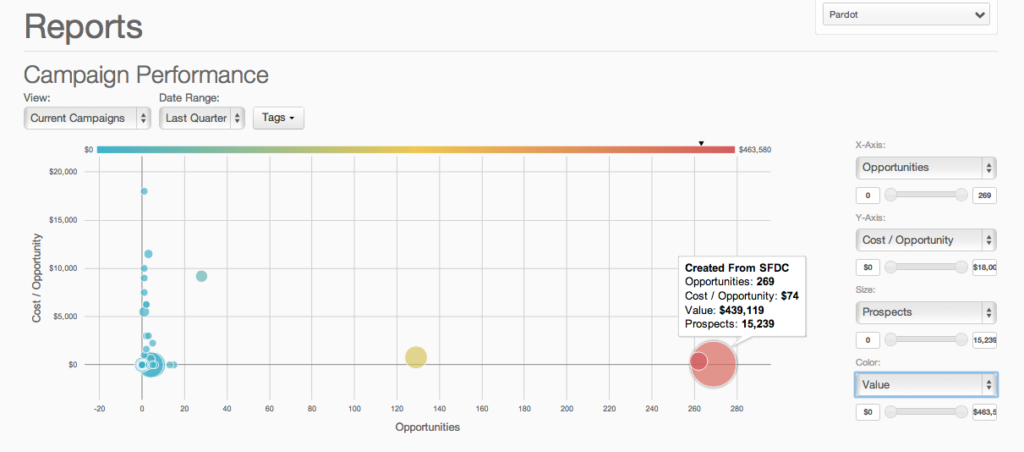
Underneath the graph you’ll be able to see each campaign and these stats:
- Number of visitors
- Prospects
- Assigned prospects
- Cost per prospect
- Opportunities
- Number of opportunities vs Prospects %
- Cost per opportunity
- Total value
- Revenue
- ROI %

When you click on the campaign you can then see all prospects who are associated with the campaign.
Questions?
You may have questions or ideas about Pardot reporting after reading this. If you do and want to talk about them, send a message. Ask a question

Tom Ryan
Founder & CEO of MarCloud, Tom has been on both sides of the fence, client-side and agency, working with Salesforce platforms for the best part of a decade. He's a Salesforce Marketing Champion and certified consultant who loves to co-host webinars and pen original guides and articles. A regular contributor to online business and marketing publications, he's passionate about marketing automation and, along with the team, is rapidly making MarCloud the go-to place for Marketing Cloud and Salesforce expertise. He unapologetically uses the terms Pardot, Account Engagement and MCAE interchangeably.
More by Tom RyanFeatured resource
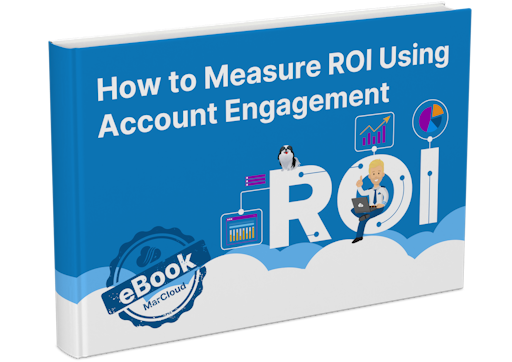
How to Measure ROI Using Pardot
Proving ROI is the holy grail for marketers. In our ‘How to Measure ROI Using Pardot’ eBook, you’ll find a detailed list of all the steps you need to take to fully track and report on marketing attribution and return on investment. If you can make it through the guide with every single checkbox ticked, you can consider yourself a true expert!
Download now